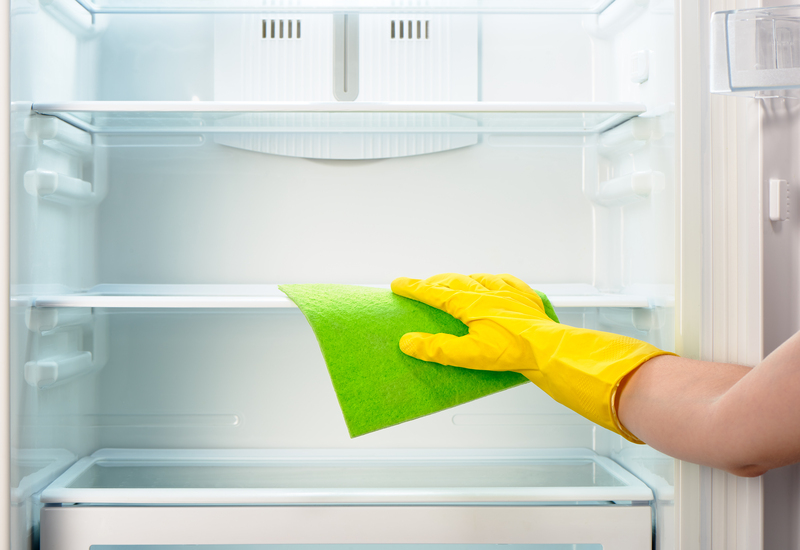Proven Methods for Effective Curtain Cleaning
Posted on 30/05/2025
Proven Methods for Effective Curtain Cleaning
Are your once-lustrous curtains looking dull and grimy? Wondering how to revive them? Regular and thorough curtain cleaning is vital not just for the appearance of your home, but also for maintaining a healthy environment free from dust, allergens, and unwanted odors. In this comprehensive guide, we'll explore a variety of proven methods for effective curtain cleaning--from simple dusting to professional-level deep cleans. Whether you have lightweight sheers, luxurious velvet drapes, or sturdy blackout curtains, we have tips for every fabric and situation. Read on to discover how to keep your curtains fresh, vibrant, and dust-free!

Why Curtain Cleaning Matters
Your curtains naturally attract dust, pet hair, pollen, and even mold spores due to their placement near open windows and doors. Over time, these contaminants can impact your indoor air quality, trigger allergies, and cause fabrics to deteriorate prematurely. Routine curtain cleaning prolongs the life of your window treatments, keeps your home healthier, and ensures your rooms always look their best.
Common Types of Curtain Fabrics and Their Cleaning Needs
- Cotton or Linen: Popular for their breathability, these are usually machine washable but can shrink or wrinkle.
- Synthetics (Polyester, Nylon): Durable and generally safe for machine washing, but check for specific care instructions.
- Velvet: Luxurious but delicate. Usually requires dry cleaning or gentle vacuuming.
- Silk: Elegant and fragile; best cleaned by professionals or with gentle hand washing.
- Blackout or Thermal Curtains: May come with special linings that need careful handling, often just vacuumed or spot cleaned.
How Often Should You Clean Your Curtains?
The frequency of curtain cleaning depends on several factors:
- Proximity to busy roads or dust sources
- Presence of smokers or pets in the home
- Allergy concerns
- Material and color of the curtains
As a rule of thumb, give your curtains a light cleaning (vacuum or shake out) every few weeks. Deep cleaning with washing, dry cleaning, or steam should be done at least twice a year, or more often for homes with high dust, pets, or allergies.
Proven Curtain Cleaning Methods
1. Vacuuming Curtains
Vacuuming is one of the simplest ways to maintain clean curtains. Regular vacuuming removes loose dust, dirt, and hair, preventing buildup that can lead to deep staining or fabric wear.
- Use a soft brush or upholstery attachment on your vacuum cleaner.
- Run the vacuum from top to bottom, paying special attention to pleats, folds, and hems where dust gathers.
- Do this every two weeks, or more frequently if you have pets or allergy sufferers at home.
This method is gentle and quick, especially suitable for heavy or delicate drapes that are tricky to remove and machine wash.
2. Shaking and Beating
For lightweight curtains or sheers, taking them down and giving them a good shake outdoors is a classic method. You can also use a curtain beater or a rug beater gently.
- Remove curtain from the rod carefully.
- Shake or beat outside to dislodge dust and loose debris.
- Leave curtains to air out before rehanging.
This method is effective for fabrics that can be handled vigorously and is perfect as part of your spring-cleaning routine.
3. Machine Washing Curtains
If your curtain's care label indicates machine washing is safe, follow these steps:
- Check for Stains: Pre-treat stains with a gentle stain remover or a paste of baking soda and water. Gently rub and let sit.
- Remove Hooks and Hardware: Take off all hooks, rings, and weights to prevent fabric damage and noise in the machine.
- Select a Gentle Cycle: Use cold or lukewarm water and a mild detergent. Select the gentle or delicate cycle to avoid curtain shrinkage and fading.
- Tumble Dry or Hang Air-Dry: Avoid over-drying in the machine; most curtains do best when dried naturally. Smooth out wrinkles and rehang while slightly damp for a crisp finish.
Remember: Always read and follow the manufacturer's cleaning instructions! Not all curtain materials can handle machine washing.
4. Hand Washing Curtains
This method is ideal for delicate curtains such as lace, silk, or hand-embroidered fabrics:
- Fill a bathtub or basin with lukewarm water and a mild detergent (avoid harsh chemicals or bleach).
- Gently immerse and swirl the curtains; do not twist or wring.
- Rinse thoroughly to remove all detergent residues.
- Press out excess water between towels and hang to air dry.
Pro tip: Iron (on low setting) while still slightly damp for the best finish.
5. Steam Cleaning Curtains
Steam cleaning is an increasingly popular and effective curtain cleaning technique, offering several advantages:
- No harsh chemicals needed, making it eco-friendly and safe for allergy sufferers.
- Kills dust mites, germs, and bacteria on contact.
- No need to remove curtains from their rods!
- Leaves fabrics fresh and wrinkle-free.
For best results:
- Use a handheld garment steamer.
- Steam from top to bottom, not allowing the nozzle to touch the fabric directly (to prevent water spotting).
- Focus on areas with visible stains, folds, and the lower hems where dust accumulates.
Test on a small patch to ensure your curtain fabric is steam-safe!
6. Dry Cleaning Curtains
For stiff, lined, pleated, or heavily decorated curtains, dry cleaning is often the safest and most effective curtain cleaning method.
- Always check the fabric label for a "dry clean only" recommendation.
- Seek a reputable cleaner experienced with curtains and draperies.
- Inform the cleaner of any stains or delicate details (like embroidery or beads).
While this method can be more expensive, it prevents discoloration, shrinkage, and damage to sensitive fabrics.
7. Spot Cleaning and Stain Removal
Not every incident calls for a full wash. For accidental stains, spot cleaning provides a quick and effective curtain cleaning solution:
- Dab the stain gently with a cloth dampened with a mild detergent solution.
- Don't rub vigorously--this can spread the stain or damage fibers.
- Rinse with a clean, damp sponge and blot dry with a towel.
- For persistent stains (such as grease or ink), consider a fabric-specific stain remover or consult a professional.
Always test a small, inconspicuous area first!
Natural and Eco-Friendly Curtain Cleaning Tips
For sustainable and gentle curtain cleaning, try these natural methods:
- Use baking soda sprinkled on dry curtains to neutralize odors before vacuuming.
- Mix white vinegar with water (in a spray bottle) as a deodorizer and mild disinfectant for spot cleaning.
- Let curtains air dry under shaded sunlight--sunlight can bleach stains but harsh direct sun may fade colors over time.
Natural products are preferable for homes with children, pets, or allergy sufferers, and help preserve fabric integrity.
Proven Curtain Care and Maintenance Tips
To ensure your drapes remain clean and beautiful between deep cleans, follow these care routines:
- Dust Windows and Sills: Prevent dirt transfer to curtains by keeping adjacent surfaces clean.
- Use Sheers or Liners: These act as a dust barrier and can be washed more frequently.
- Avoid Smoking Indoors: This keeps your curtains smelling fresh and prevents stubborn yellow stains.
- Rotate Curtain Panels: If possible, switch panels between windows or sides to ensure even exposure to sunlight and air.
- Hang Curtains Properly: Avoid dragging on the floor; this stops fabric from picking up dirt and dust.
When Should You Replace Rather Than Clean Curtains?
While effective curtain cleaning can extend the life of your window treatments, some signs mean it's time for a replacement:
- Noticeable mold or mildew, especially if it persists post-cleaning
- Severely faded, torn, or threadbare fabric
- Stubborn odors that don't respond to deep cleaning or fresh air
- Extensive water or smoke damage
In such cases, investing in new curtains will restore your home's appearance and improve indoor air quality.

Frequently Asked Questions About Curtain Cleaning
Can I Wash All Curtains at Home?
No. Always check for 'machine washable' or 'dry clean only' labels. Delicate fabrics like silk and thick lined curtains may need professional cleaning for best results.
How Can I Prevent Curtains from Shrinking?
- Always wash with cold or lukewarm water.
- Use gentle cycles and avoid high heat during drying.
- Hang curtains while slightly damp to retain their shape.
Is Steam Cleaning Curtains Safe?
Steam cleaning is safe for most synthetic and natural fabrics but always test a small area first. Avoid steam on delicate silks or old, threadbare curtains.
How Do I Remove Wrinkles Without Ironing?
Hang curtains in the bathroom while taking a hot shower: the steam relaxes wrinkles. You can also use a garment steamer for spot touch-ups.
Conclusion: Refresh Your Home with Effective Curtain Cleaning
Curtain cleaning doesn't have to be a dreaded chore. With the above proven methods--not only vacuuming, machine washing, and steam cleaning, but also spot treatments and preventive care--you can keep your window treatments stunning, healthy, and long-lasting. Whether you opt for DIY or professional curtain cleaning, regular maintenance yields fresher air, brighter rooms, and a strong impression on your guests.
Don't forget: always check fabric care labels, test products on small sections, and schedule routine cleans for best results. A little attention and the right curtain cleaning method will keep your curtains beautiful for years!
Want to share your curtain cleaning tips or need help with a tricky stain? Comment below or contact us today--we're here to help you achieve cleaner, happier homes!



